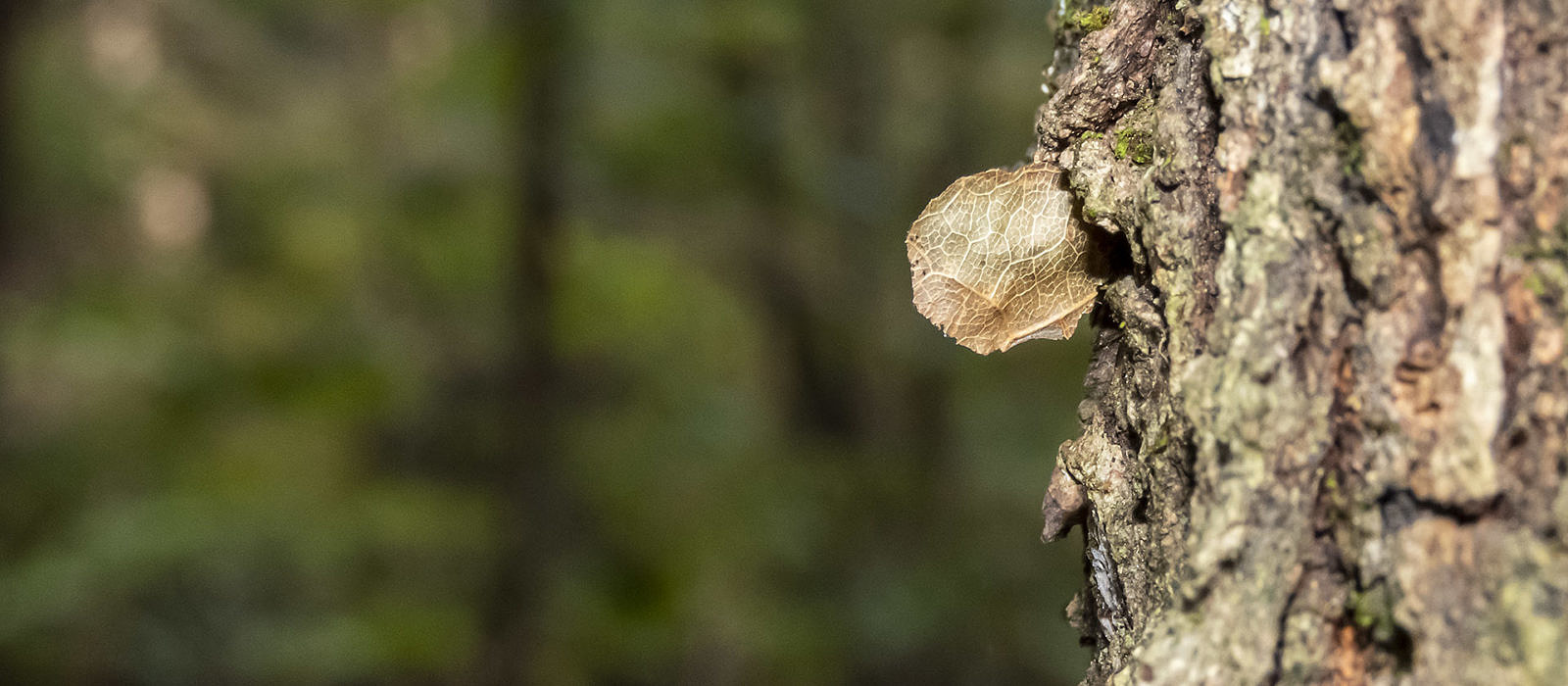
Maple Leafcutter Moth
The full life cycle of Maple Leafcutter Moth (Paraclemensia acerifoliella) — an addendum to my post at Chasing Nature on Substack.
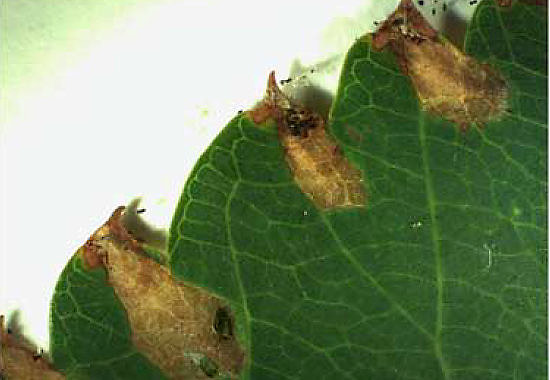
Spring
Adults emerge in spring to mate. Females lay eggs on the underside of Sugar Maple (Black Maple as well toward the Midwest), although they rarely use other species as well. Using her sharp ovipositor, the female creates a series of tiny pockets in the tissue, most often at the leaf margin, into one of which she deposits a single egg (occasionally more).
Within a week or two, usually by June here in Vermont, a caterpillar hatches and makes its egg shell its first meal. After that, it begins to feed on the leaf tissue from within the pocket that its parent excavated during egg-laying. As it feeds, the caterpillar can leave serpentine, linear, trumpet-shaped leaf or blotchy mines (chewed-out sections in the leaf). Image source: Pohl et al. (cited below)
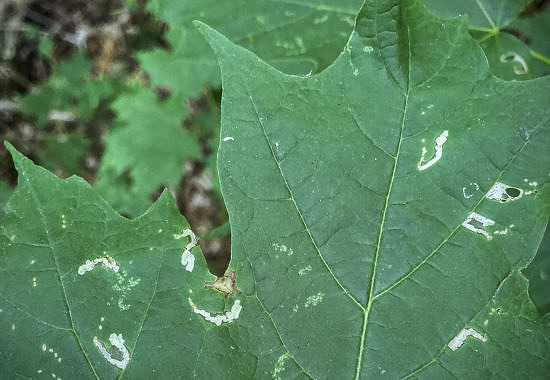
Early Summer
By early summer, at least here in Montpelier, Vermont, sugar maple leaves begin to show the first signs of larval feeding. These aren't complete discs, but rather "commas" and other odd squiggly shapes in the leaf tissue. This photo was from 24 June 2020.
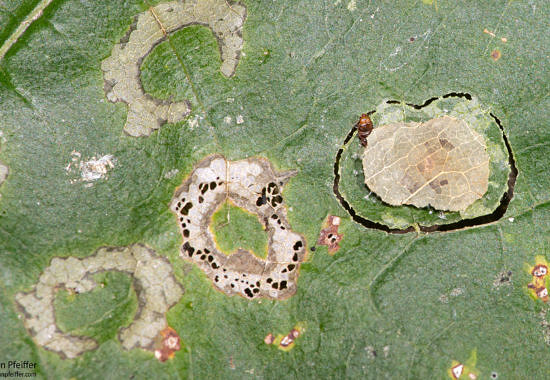
Summer
Next comes the disc-making stage. The caterpillar cuts (by chewing) two oval discs in the maple leaf, one larger than the other, and stitches them together. It carries its disc to a feeding spot on the upper surface of the leaf. From within this shelter, with the larger disc on top serving as overhanging roof, the caterpillar feeds on the leaf tissue just beyond the perimeter of the smaller, lower disc. This creates the skeletonized crescent or oval patches on the leaf surface that you can see in this image, which were made earlier by either this caterpillar or another. You can also see "stitching" on the disc covering the caterpillar.
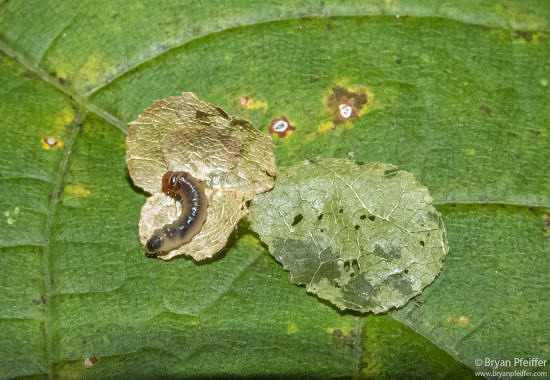
Late Summer
As the caterpillar feeds, it molts and begins to outgrow its shelter. So it keeps adding new discs to its initial shelter, under which it continues to feed. In this image, I've opened up a shelter. We're seeing the caterpillar resting by two pale halves of its shelter (like an open clamshell). But take a look at the upper half and you'll see an even-smaller disc from an earlier shelter. We're also seeing the largest outer cover disc (greener and on the right), which had covered the smaller shelter.
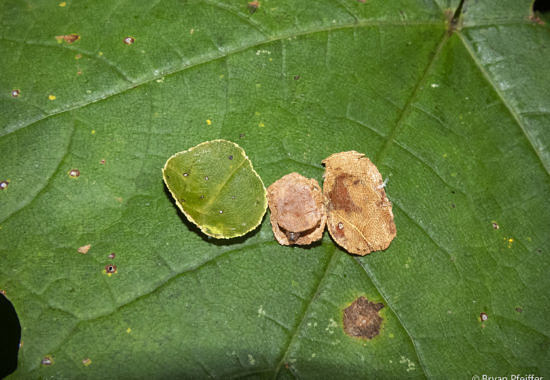
Late Summer-Fall
For this image, I opened the outer layers of a fully-formed shelter to find a smaller shelter within, and the caterpillar inside (partially hidden). The entomological literature points to as many as six leaf case shelters. But it could be that the caterpillar eats earlier shelters or they decay and disintegrate. If I had opened that smaller shelter around the caterpillar, I suspect I might have seen remnants of an earlier shelter inside. Overall, I suspect this shelter, with its thick outer leaf discs, is the final form before the caterpillar drops to earth to pupate and spend the winter.
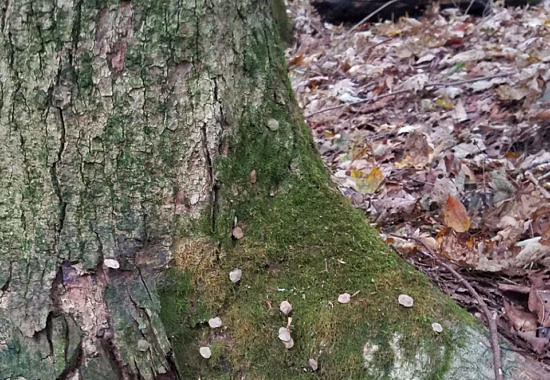
Fall
In autumn, the caterpillars drop to earth from their leaves. The case-building phase comes to its rightful conclusion. No more chewing — unless, however, the caterpillar decides to climb up a maple for more feeding, which we're seeing here in a photo from Shelby Perry.
Otherwise, within its fallen case, the caterpillar will weave itself a silken cocoon and become a pupa. (By the way, despite their shelters, various wasps or other parasites might by now have infected lots of these caterpillars, preventing the life cycle from progressing.)
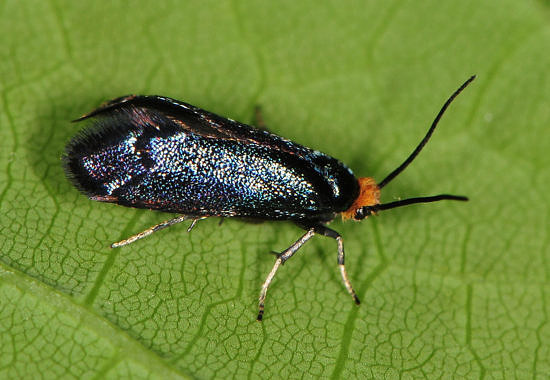
Winter–Spring
In the overwintering pupa,transformation happens: a crawling, chewing, case-building caterpillar transforms into a small day-flying moth, which takes flight here in May just as fresh Sugar Maple leaves emerge — and the cycle begins again. Image © Jason Michael Crockwell (via iNaturalist and Creative Commons)
